Nikon Nikkor AF-S DX 55-200 mm f/4-5.6G IF-ED VR
3. Build quality
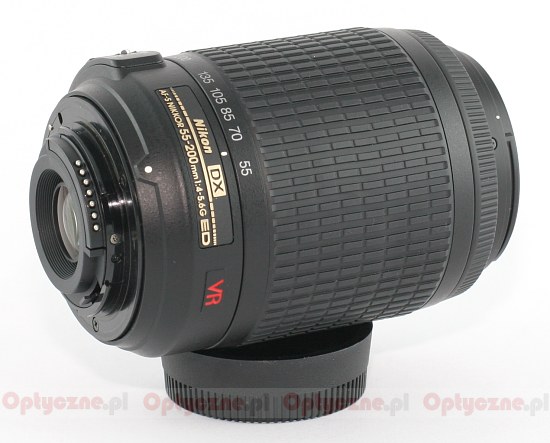 |
There are two switches on the left side of the lens: one to change the focusing mode from manual to automatic, the second to switch the stabilization on and off.
Please Support UsIf you enjoy our reviews and articles, and you want us to continue our work please, support our website by donating through PayPal. The funds are going to be used for paying our editorial team, renting servers, and equipping our testing studio; only that way we will be able to continue providing you interesting content for free. |
- - - - - - - - - - - - - - - - - - - - - - - - - - - - - - - - - - - - - - - - - - - - - - - -
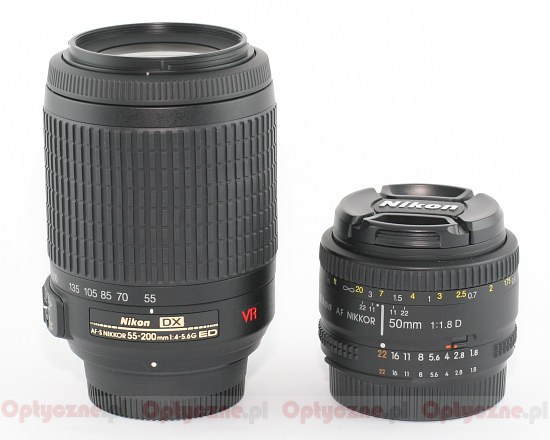 |
The 55-200 mm model without stabilization weighed just 255 grams and consisted of 13 elements in 9 groups with two elements made of low-dispersion ED glass. The 55-200 mm VR lens has already 15 elements in 11 groups (but only one ED element). The amount of elements is bigger, a VR system was added, small wonder the weight increased (to 335 grams) and so did the physical dimensions. There are also disadvantages – the minimal focus increased from 0.95 to 1.1 meter. The construction is complemented by a 9 diaphragm blades aperture which can be closed down to f/22-32 (depending on the focal length) and a 52 mm non-rotating filter thread.
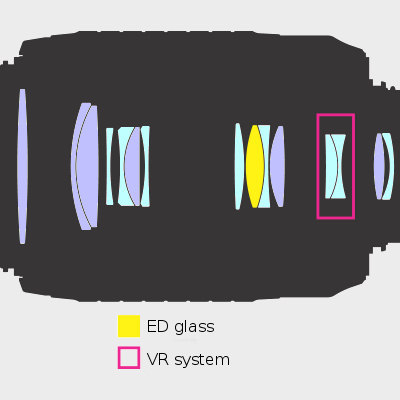
The buyer will find a bayonet lens hood and a soft pouch included in box.
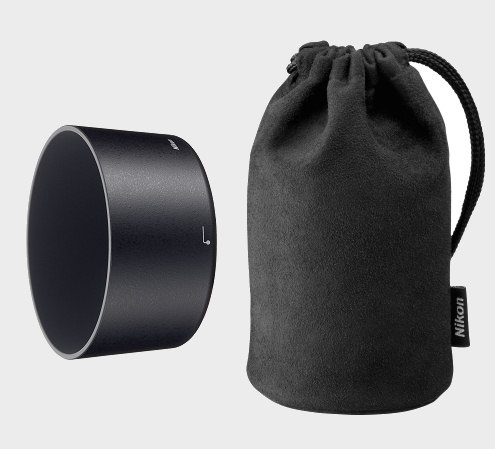 |
When it comes to stabilization we were very curious how will it really perform. Our previous tests showed that stabilized sensors reach results from 2 to less than 3 EV and stabilized lenses- from less than 3 to less than 4 EV. How the Nikkor fares in this category? Let’s have a look at the picture below with test chart scenery crops taken at 100 mm and at exposure times from 1/125 to 1/10 s.
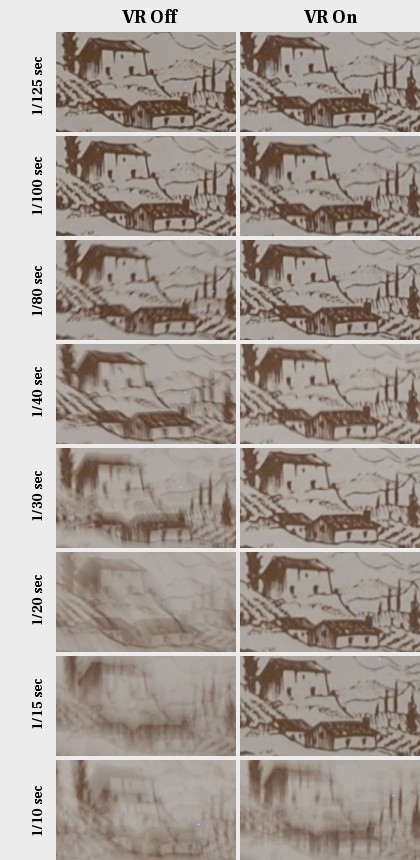
When the lens works without stabilization the first traces of blur can be noticed between 1/100 and 1/80 s. With the stabilization switched on, sharp pictures can be taken up to 1/15 s. inclusive. We can extend the time of work about 7 times and it can be translated into near 2.8 EV efficiency. This result is similar or a tad better than the best results of stabilized sensors.






